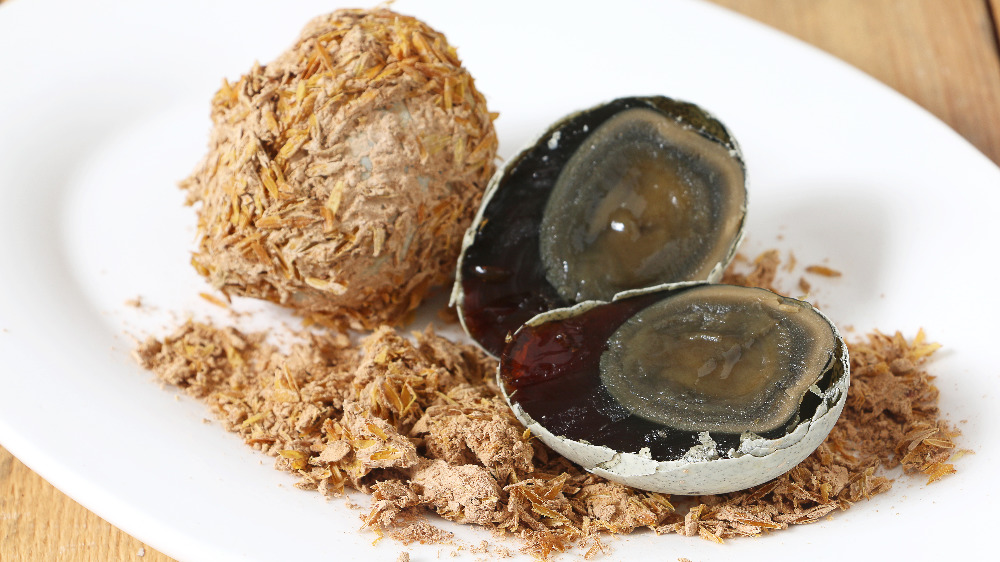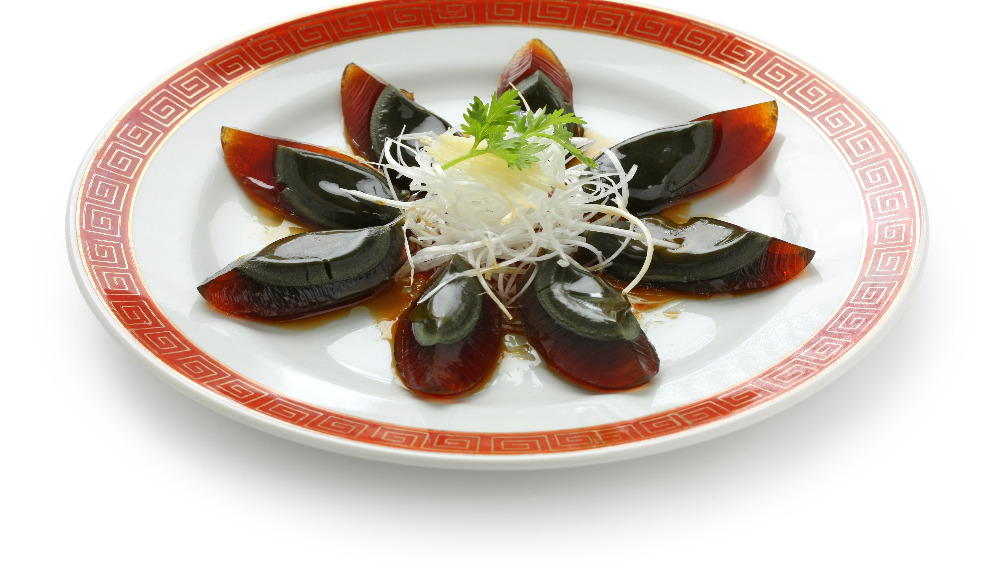Don't Believe This Myth About Century Eggs
There are a number of things we do with eggs to get them ready to be eaten. We fry them sunny side up or over easy, scramble them to make plain eggs, or to use them as a base for filled omelettes, poach them, bake them to make the French oeufs cocotte, or turn them into custards, quiches, and frittatas. The one thing we don't think about doing, is burying them in quicklime, salt, and ash, and coating in rice chaff (via Food 52).
They're called century eggs in some places, and hundred — or thousand-year old eggs in others — but it actually takes much less time than that to get this classic Chinese ingredient ready. The eggs, which can be duck, chicken, or quail, are cured for a hundred days in a quicklime mixture, and History says this method of preparing this classical Chinese dish was discovered six centuries ago, when a man found a stash of duck eggs buried in lime in his back yard in Hunan Province. He apparently enjoyed them so much he decided it was worth making eggs just like that, and the rest is food history.
Century eggs can be a challenge for the uninitiated
If you're used to the sight of clear, transparent egg whites and golden yolks, the look and aroma of a newly-cracked century egg may come as a shock. Most Chinese cooks take big cleavers to slice the eggs apart, and the reveal will present an egg that will not only smell sulfurous, but it appears with a shiny, dark, and translucent outer layer. Its usually sunny yolk will be a gray-green shade may either be firm or slightly runny and goopy, so in short, everything you wouldn't expect an egg to be. The taste of a century egg might challenge your imagination, too, because the darkened albumen will have the consistency of jello, and its yolk will be a rich, creamy, dark custard (via Food 52).
Century eggs are the pick-me-up in a dish of soft tofu, where it is served on the side along with a sauce made up of soy sauce, rice vinegar, sesame oil, and garlic. Century eggs also take turn and are the stars of the show in a white bowl of congee or savory rice porridge. They can also be eaten as an appetizer with pickled ginger (via History).

